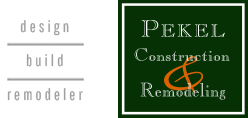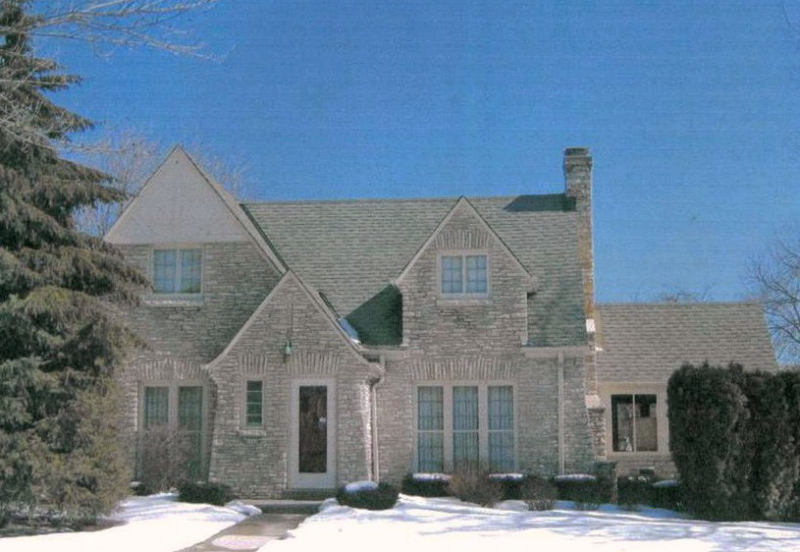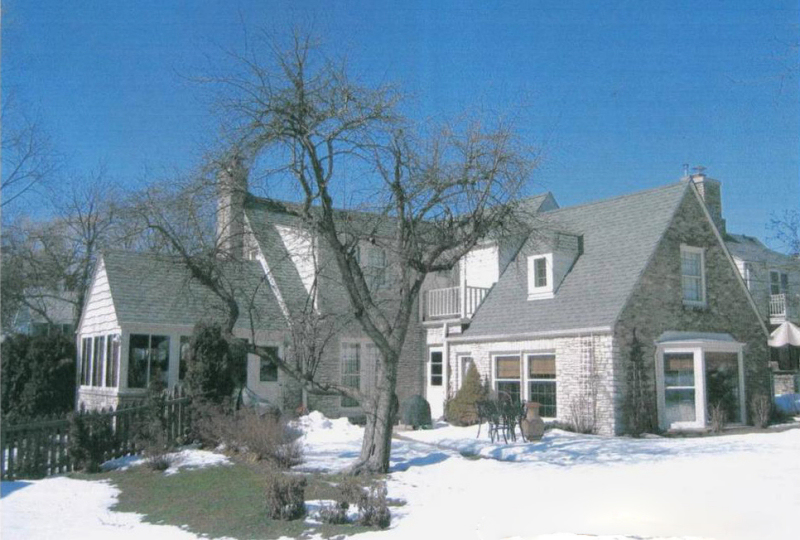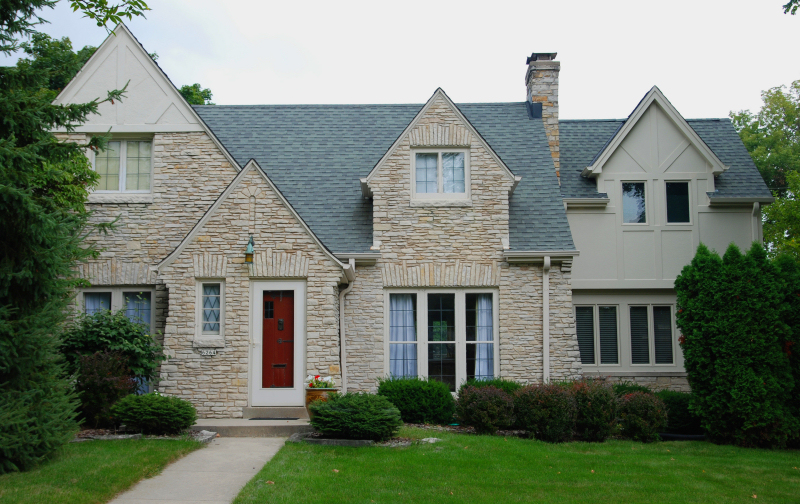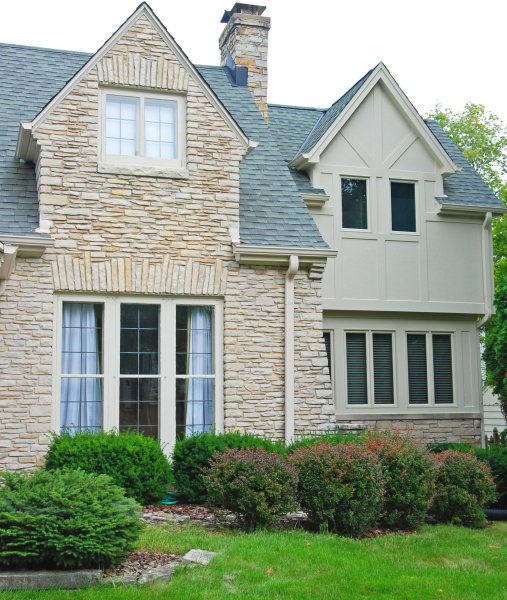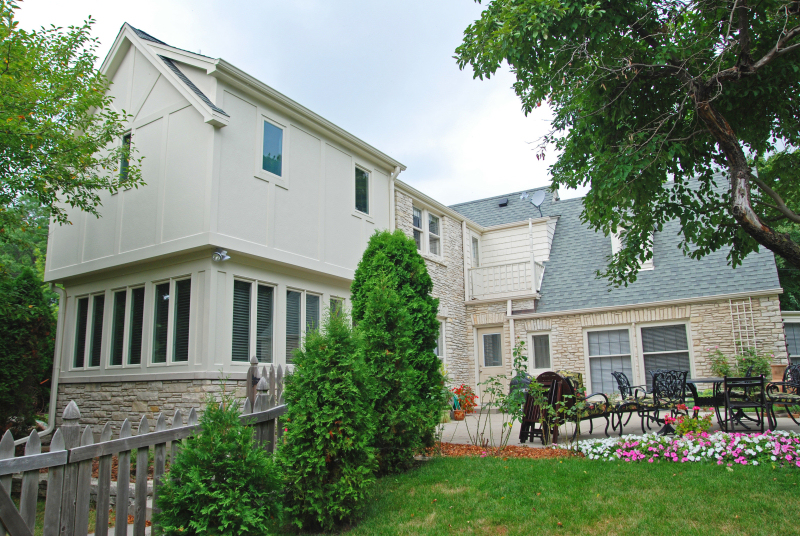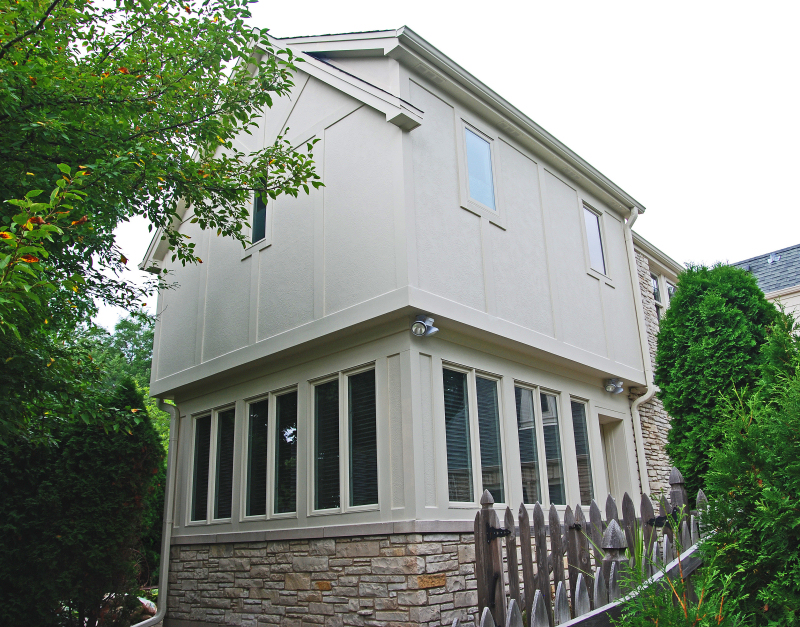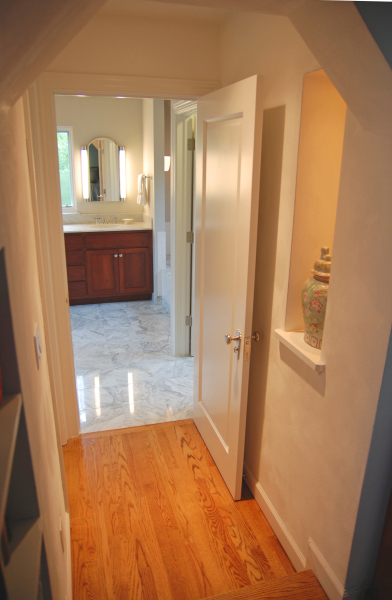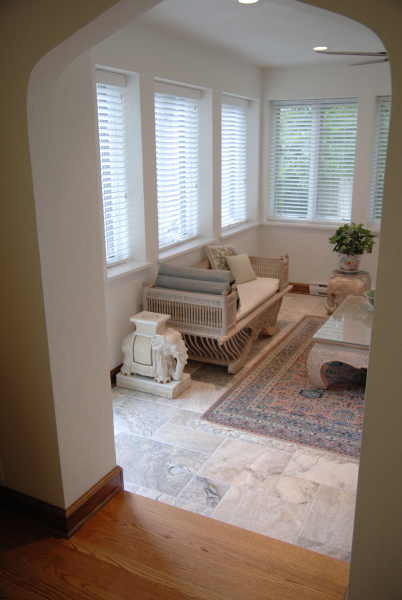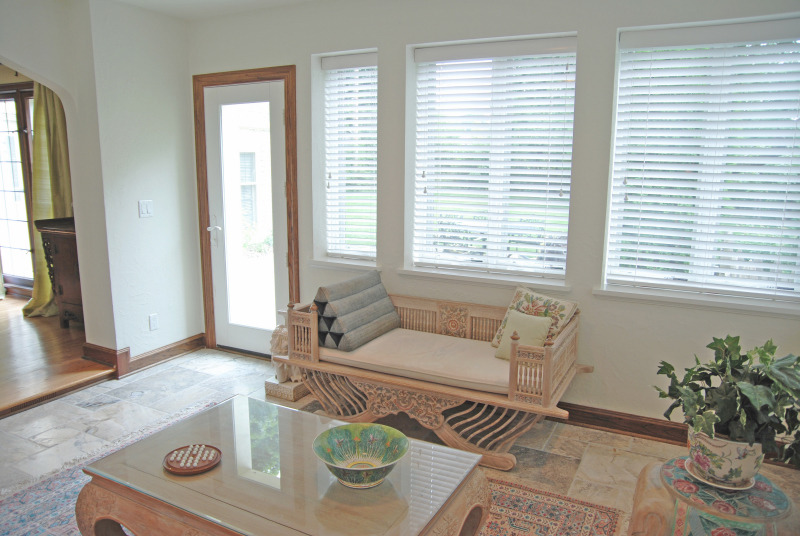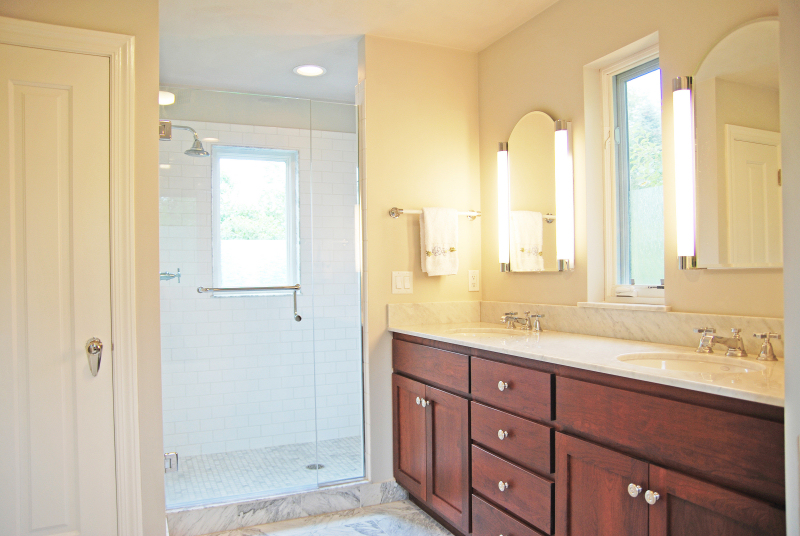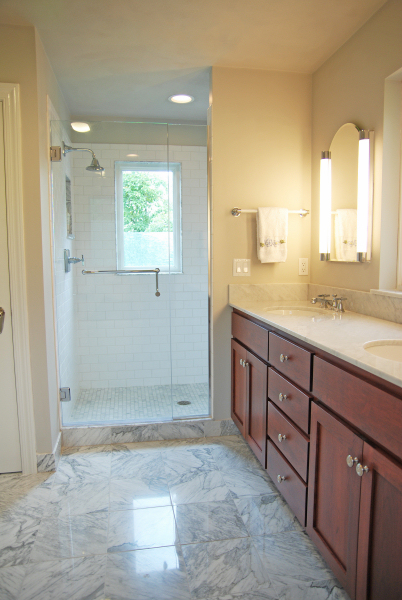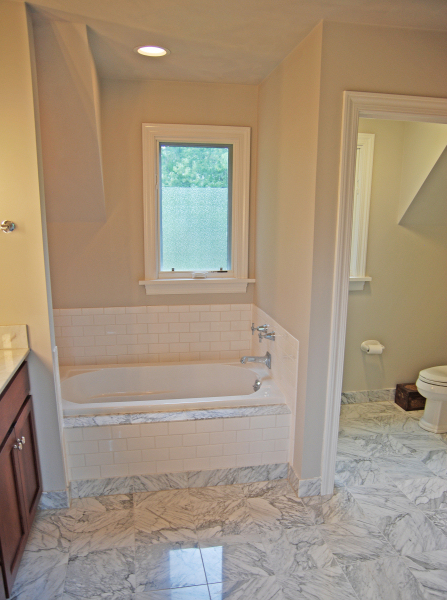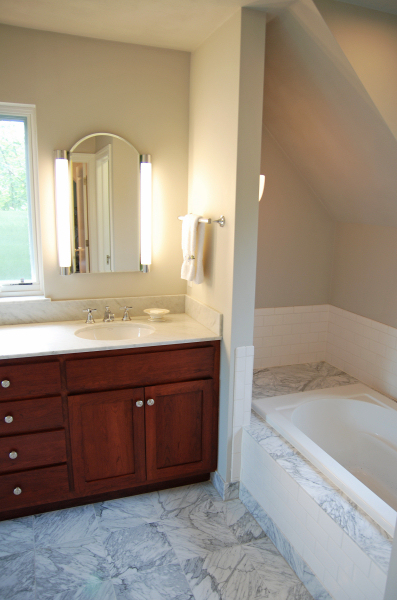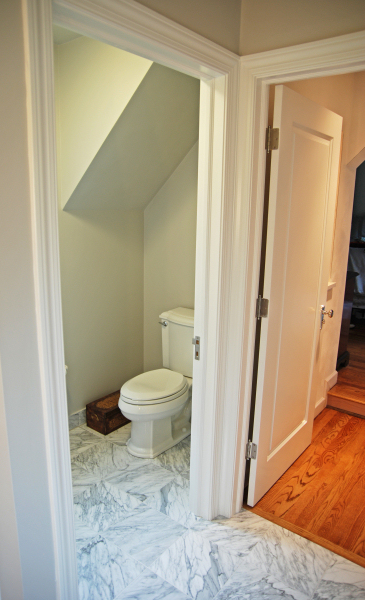Historical Renovation/Restoration, 2-Story Addition
They have lived in Australia, England, China, Alabama, and now Wisconsin. This was hopefully the last move for the family although due to the nature of his career, travel to Asia remained a frequent requirement for the job as well as a personal travel choice for both of them.
They found their new home in a style that they liked, that met with their specific requirements for number of bedrooms, bathrooms, yard space, quality of life, proximity to everything, and possessed the old world European charm they had grown to love. With one significant exception for her, it did not have a master bathroom. But it was going to, if they were to remain happily married.
Built in 1942, the Cotswold Style Lannon Stone and stucco board and batten Tudor was well maintained. Beautiful plaster work, arched openings and built-in niches, hardwood floors, and natural wood trim filled the house. Of course, over the years through different owners the house had some remodeling done to it to fit those owner’s needs. One of the additions to the house was a single story screened room that had no useful function to the new owners. Further, it was only accessible from the outside, unless you were willing to crawl through the living room window.
Before
The mister, an engineer by training and vocation recognized early on the potential the space represented to become a more useful. The footprint was just right as he saw it, the foundations suitable, and its location on the same side of the house as the master bedroom made it ripe for a conversion to a master bathroom. Being that it was an attached single story addition though meant that it certainly could not function as a master bath if the bedroom it was to serve was on the second floor. What then would they do with the first floor and how could that space be thoughtfully incorporated into the flow of the remainder of the house? Furthermore, they really did not feel like they needed additional space on the first floor and were reluctant about the expense of finishing it off just so they could build on top of it for what they really wanted. These were the beginning of a number of challenges.
When we met and evaluated the house and learned of all of the things they were interested in, and through our own observations, we made recommendations that they agreed to be not only practical but useful for them.
The wants and needs for the second floor bathroom included such must haves as; a double vanity, a large walk-in shower, a whirlpool tub of maximum size set into a deck with an outside view, a linen closet, a separate toilet area, (if possible), heated flooring, whisper quite exhaust venting, and an ample walk-in closet, while having the room being specifically accessed through a modified window opening in the bedroom all without any other interior interruptions to the room. It was a lot to hope for and doing the math, the square footage appeared to support that capability, including turning the window into a compliant door opening to the new room.
After
The question of the day remained what to do with the first floor beneath it? After listening to the stories of their travels, their affinity for the Asian culture, and that they had amassed more than several antique Chinese furnishings among other collectables and that these did not appropriately fit elsewhere in the house, we suggested using the remodeled first floor for that purpose. Fill the room with windows that would allow for natural and diffused light, incorporate the authentic hand troweled plaster details, carry into the room the hardwood flooring of the living room and remove the windows to the space and create an arched opening to match that of the others in the house. As the pieces that they were trying to display were antique furnishings and not hanging artwork, the subsequent lack of wall space created by the windows would only assist in accentuating the furnishings as being the focal point of the space.
That became the plan, after which it did not ever get any easier from that point forward.
Being that the addition was constructed as a screened room only with no intentions of ever heating or cooling it created the first challenge in how to get mechanicals to the first and second floor spaces. We were only going to remove the framing, the stone walls and slab on grade foundation below were to remain, largely as a cost consideration. At first blush, creating a 6” high sleeper-floor on top of the first floor of the space meant we could insulate the floor and obtain enough room to get the ductwork from the basement into the first floor of the new room. Raising the floor also allowed for a same height floor transition between the living room and the space. However, when it came time to add the second floor to the project the trial really began.
Even though the math made sense on paper in terms of the square footage holding capacity of the second floor master bathroom, the architectural impact of the exterior would not allow for it. In order to meet the minimum head room requirements for the space, stay within the foot print of the foundation, and have the new rooms’ floors meet in the same plane as the adjoining existing rooms, the ridge of the second floor of the addition would rise above the primary ridge line of the house. That was not a bad thing as the way it presented from the exterior it balanced the front dormer on the opposite side of the front of the house. In essence, it worked not only aesthetically but from a functional interior stand point as well. Thusly, we were able to squeeze everything into the bathroom.
Upon presentation to the local municipality’s architectural review commission the plan was summarily rejected. Despite being quick to point out that the design was in the context of the spirit of the Cotswold Tudor design the height of the new ridge turned them off. They could not pin point the reason that it did, but they did not like it. Back to the drawing board.
Being that the only clue that they gave us for their dissatisfaction was the height of the ridge, we revisited the design with the idea of bringing it below that of the existing house. To make it work again from a space planning standpoint, we had to extend the second floor foot print beyond that of the first floor. It worked and met with their unanimous approval upon re-submission.
This modification had implications both on the first and second floor. Again, the ceiling heights of the rooms came into play. To maintain code height requirements both the first and the second floors of the addition it would require a step down into each of the spaces. On the first floor this meant eliminating the sleeper floor and any subsequent hope of getting duct work through it. We scrapped the idea of a hardwood floor as well and chose to heat the floor with cable heat and install a stone tile on top of it. Base board electric heat was also installed and on its own thermostat. Routing of the duct work, supply, waste and vent lines for the bathroom was relatively easy as we constructed a mechanical chase adjacent to the fireplace chimney that encroached into the room on the first floor.
The rooms are of nice scale and proportion for the tasks they support. All of the wall finishes match the plaster style of the existing rooms that they adjoin. On the second floor, a hallway was created to the side of the new walk-in closet leading to the bedroom and a lighted plaster niche added to the other side. It is a nice design detail and because it is on a dimmer, serves as an occasional night light.
In the bathroom, a heated marble floor is featured and runs continuous throughout the space including the on the tub deck/wall and the water closet. The shower floor is heated as well. A large shower was possible that includes built-in tiled niches and a convenient bench seat. The vanity cabinet is custom fabricated from Cherry with a stone top and under-mounted china sinks. His and her lighted ROBERN medicine cabinets are located above each sink flanking a strategically located window between that breaks up the gable end mass of the exterior. The new recess panel doors including the ball tipped finial hinges and replica handle hardware match the remainder of the house. Of course the exhaust fans are so quite they cannot be heard.
Due to the relatively smooth nature of the homes existing stucco exterior, the board and batten utilized is a combination of AZEK, 5/4” synthetic trim and a fiber cement stucco board painted to match the existing board and batten on the other locations of the house, new roof shingles match the existing, and the apron of stone on the grade elevation is original to the existing screen room addition.
The first floor accomplishes the objective of lots of natural light while providing a back drop with quality architectural appointments such as stone flooring, traditional crows foot plaster finishes, matching base and casing, an arched plaster entry while training your eye to the details of its furnishings.
